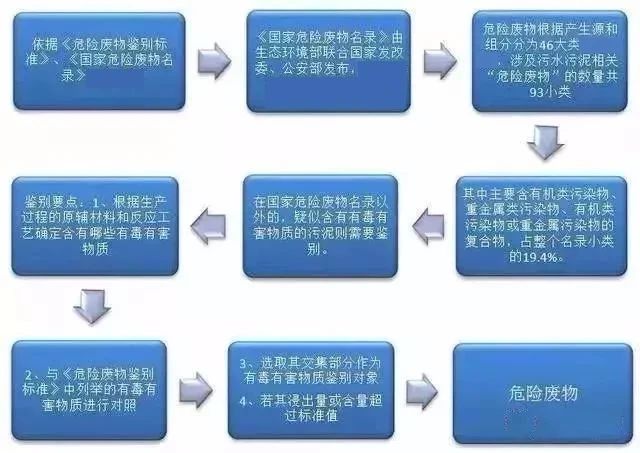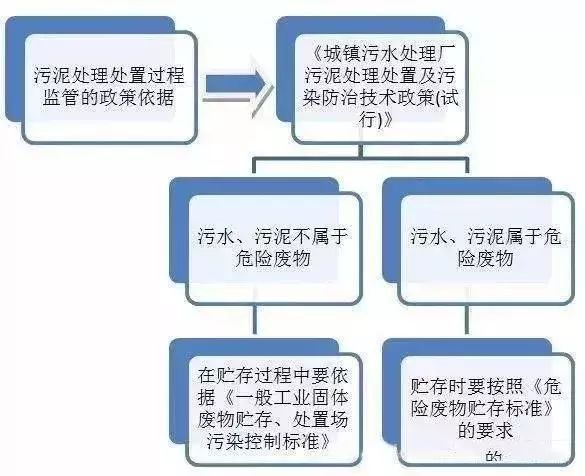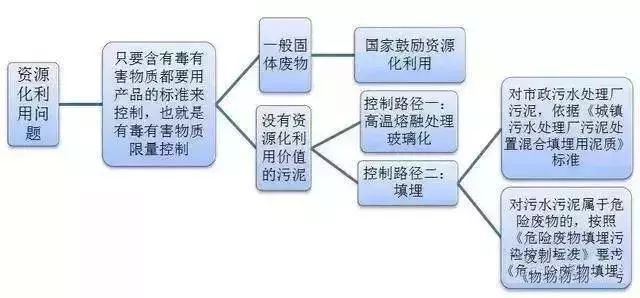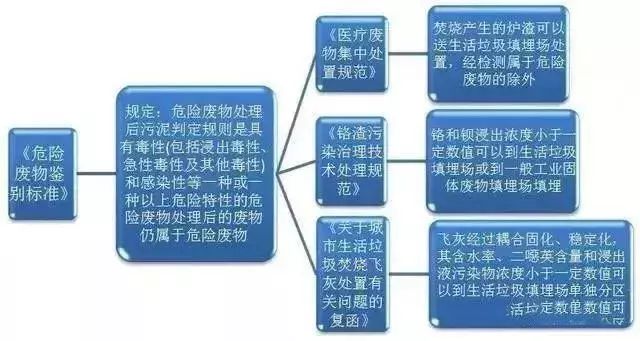Is sludge a hazardous waste? Many people have such doubts:



I compiled information about whether sludge is hazardous waste for reference!
First of all, the sludge produced by public sewage treatment plants, which are only used to treat urban domestic sewage, usually has no hazardous characteristics and can be managed as general solid waste.
In addition, the sludge produced by the treatment facilities specially treating industrial wastewater (or a small amount of domestic sewage at the same time) may have hazardous characteristics, so the hazardous characteristics of sludge should be identified according to the National Catalogue of Hazardous Wastes, the national environmental protection standard Technical Specifications for Hazardous Waste Identification (HJ/T298-2007) and the hazardous waste identification standard.
Third, if the public sewage treatment plant with the main function of treating domestic sewage receives and treats industrial wastewater, and the industrial wastewater can stably meet the national or local pollutant discharge standards before being discharged into the public sewage treatment system, the sludge of the public sewage treatment plant can be managed according to the provisions of Article 1. However, in case of major changes in the discharge of industrial wastewater, the hazard characteristics shall be identified in accordance with the provisions of Article 2.
In the fourth category, if an enterprise discharges industrial wastewater directly or indirectly outside its legal boundary, the effluent quality shall meet the national or local pollutant discharge standards; The sludge generated in the process of wastewater treatment belongs to the solid waste being generated. The hazardous characteristics of the sludge shall be identified. The sludge shall be sampled in the process of wastewater treatment in accordance with the Technical Specifications for Hazardous Waste Identification, and the minimum number of samples shall be determined according to the amount of sludge generated.
Several typical sludge discrimination
1. Electroplating wastewater and electroplating sludge with excessive heavy metals:
Electroplating sludge belongs to hazardous waste, and the waste category often belongs to HW17, HW21, HW22 and HW23 at the same time. Electroplating wastewater with excessive heavy metals belongs to the scope of waste water pollution prevention and control, and is included in waste water management. It is not applicable to the scope of the Law of the People's Republic of China on the Prevention and Control of Environmental Pollution by Solid Wastes, and is not a hazardous waste. Although the waste water exceeding the standard is not included in the management of hazardous waste, according to the Judicial Interpretation of the High Commissioner and the High Commissioner (2016), if the Class I heavy metals (such as lead, mercury, chromium, cadmium, arsenic) in the waste water exceed the standard by three times, or the Class II heavy metals (such as nickel, copper, zinc, manganese, vanadium) exceed the standard by more than 10 times, in addition to administrative punishment, criminal responsibility will also be investigated.
2. Sludge generated by domestic sewage treatment plant:
It belongs to solid waste, not hazardous waste. According to HB [2010] No. 157 document, in the process of transfer management of this kind of waste, "referring to hazardous waste management, establish a sludge transfer manifest system." Referring to hazardous waste management means that this kind of sludge does not belong to hazardous waste, but it is necessary to improve the management level, especially to strengthen account management, to prevent spilling, dripping, leaking and illegal dumping during transportation. However, most of the sludge generated in the sewage treatment process of industrial enterprises, because of its leaching toxicity exceeding the standard, or containing other toxic and harmful substances and other hazardous characteristics, should belong to the category of hazardous waste (the determination method is mainly based on enterprise environmental assessment, industry rules, material sources, expert identification, attribute identification, etc.).
3. Fly ash generated from domestic waste incineration:
It belongs to hazardous waste (HW18). However, after meeting the requirements of Article 6.3 in the Standard for Pollution Control on Domestic Waste Landfill (GB16889-2008), entering the domestic waste landfill for landfill will not be included in hazardous waste management; On the other hand, if the pretreatment meets the relevant requirements of the Standard for Pollution Control on Cement Kiln Collaborative Disposal of Solid Wastes (GB30485-2013), the collaborative disposal process is also included in the exemption management.
4. Sludge generated during sewage treatment in medical institutions:
Most of them are hazardous wastes. The Regulations on the Management of Medical Waste (Decree No. 380 of the State Council) stipulates that, "Medical waste refers to the direct or indirect infectious, toxic and other hazardous waste generated by medical and health institutions in medical treatment, prevention, health care and other related activities." "Infectious waste" in the Classified Catalogue of Medical Wastes (WYF [2003] No. 287) includes "other articles contaminated by patients' blood, body fluid and excreta", The grid slag, settling sludge and septic tank sludge generated in the sewage treatment process of medical institutions should be included in this category. The waste code in the new version of the National Catalogue of Hazardous Wastes is 841-001-01.
If a medical institution has specially designed wastewater treatment process and made attribute judgment on sludge during environmental assessment, if the management department believes that such sludge should be included in hazardous waste management, the final judgment should be made through hazardous waste identification procedures.
5. What kind of hazardous waste is the sludge containing waste mineral oil classified as?
Waste mineral
Finally, share a five step method to identify whether sludge is hazardous waste:
According to the National Catalogue of Hazardous Wastes and the Identification Standards for Hazardous Wastes - General Principles issued by the Ministry of Environmental Protection, the National Development and Reform Commission and the Ministry of Public Security as of January 1, 2021, and the Urban Sewage Treatment Plant jointly issued by the Ministry of Housing and Urban Rural Development, the Ministry of Environmental Protection and the Ministry of Science and Technology on February 28, 2009 Sludge treatment Technical Policy for Disposal and Pollution Prevention (Trial), which can be used to determine whether sewage sludge belongs to hazardous waste in five steps, as shown in the following figure:
First: Classification

Step 2: Judgment basis

Step 3: How to supervise

Step 4: resource utilization

Step 5: Which can be exempted?

According to the Ministry of Emergency Management, the Safety Committee of the State Council recently issued the National Three year Action Plan for Work Safety Special Rectification (referred to as the "Three year Action Plan"), which defined two special implementation plans and nine special rectification implementation plans. The three year action for special rectification started in April 2020 and ended in December 2022. It includes organizing a comprehensive investigation of hazardous wastes such as waste hazardous chemicals. Chemical parks and chemical enterprises are the key targets for remediation. It is required to implement the whole process supervision of hazardous waste storage, transportation and disposal to ensure the safe disposal of hazardous wastes.
As a result, the three-year action of special rectification of hazardous wastes has begun!
The special treatment of hazardous waste is one of the key points of the three-year special treatment - a special project for risk prevention and control of hazardous chemicals, which will be carried out in four stages.
In terms of safety improvement of hazardous waste, the Three Year Action Plan indicates that it should be carried out from several aspects, such as carrying out hazardous waste screening, improving the hazardous waste management mechanism and accelerating the construction of hazardous waste disposal capacity. In order to ensure the whole process supervision of hazardous wastes, relevant units should establish and improve management and control means from multiple aspects:
The first is to establish a standardized list account of hazardous wastes, store hazardous wastes in different categories and areas, and set up hazardous waste identification signs in the collection, storage, transportation and disposal. In particular, strengthen the supervision and inspection of chemical parks, chemical and hazardous chemical units and hazardous waste disposal units within the jurisdiction.
The second is to implement the hazardous waste declaration and registration system, and incorporate relevant behaviors into credit management while seriously investigating and punishing, and implement joint punishment; At the same time, establish and improve the joint bill system of hazardous waste transfer from generation to disposal, use information technology to control the flow direction of hazardous waste, and conduct dynamic supervision;
The third is to establish a system of departmental linkage, regional cooperation, consultation and supervision of major cases, form a whole process supervision system, revise and improve the Pollution Control Standards for Hazardous Waste Storage, and use strict means and supervision to promote enterprises to implement relevant laws, regulations and standards.
Accelerating the construction of hazardous waste disposal capacity is the end link of hazardous waste disposal, which can not be ignored. In this regard, the Three Year Action Plan proposes that all localities should reasonably plan the distribution and disposal of hazardous waste enterprises or enterprises' self utilization and disposal and other ways according to the types and quantities of hazardous waste generated in the region, strengthen the regional hazardous waste disposal capacity, and pay attention to high-risk hazardous waste, especially accelerate the research and development of comprehensive disposal technology and equipment.
The unit producing hazardous waste shall also formulate a hazardous waste management plan, and report to the local environmental protection authority at or above the county level the type, amount, flow direction, hazard level, storage facilities, self utilization and disposal facilities or entrusted external units to use and dispose of hazardous waste and other relevant data and information. It should be noted that hazardous waste shall not be stored for more than one year, and it is strictly prohibited to store hazardous waste mixed with non hazardous waste.
This means that in the field of hazardous waste treatment, a number of relevant mandatory national standards and industrial standards may be formulated and revised to regulate the development of hazardous waste treatment in enterprises and industrial parks, so as to reduce the production of hazardous waste in China and significantly improve the treatment capacity.








